At present, most personalized wearable devices are manufactured by non-in-situ printing. This method requires printing on a flat substrate and then transferring to the target surface. However, this operation may cause the printing structure and the target surface to be unable to move dynamically. Under the circumstances to achieve matching. In-situ printing provides a potential solution for printing 3D structures directly on the target surface, which requires the help of artificial intelligence (AI) to perceive, adapt and predict the state of the printing environment.
Michael C. McAlpine and Hyun Soo Park from the University of Minnesota jointly published a review article entitled “3D-printed multifunctional materials enabled by artificial-intelligence-assisted fabrication technologies” in Nature Reviews Materials.The article introduces the use of in situ3D printingElectronic materials and
biology
Ink, artificial intelligence with open loop, closed loop and predictive control3D printingMethod, and
Operation
How robots and artificial intelligence interact with3D printingThe methods are integrated with each other. Finally, for artificial intelligence,3D printing, Functional materials and personalized biology
medicine
The fusion of equipment has been prospected.
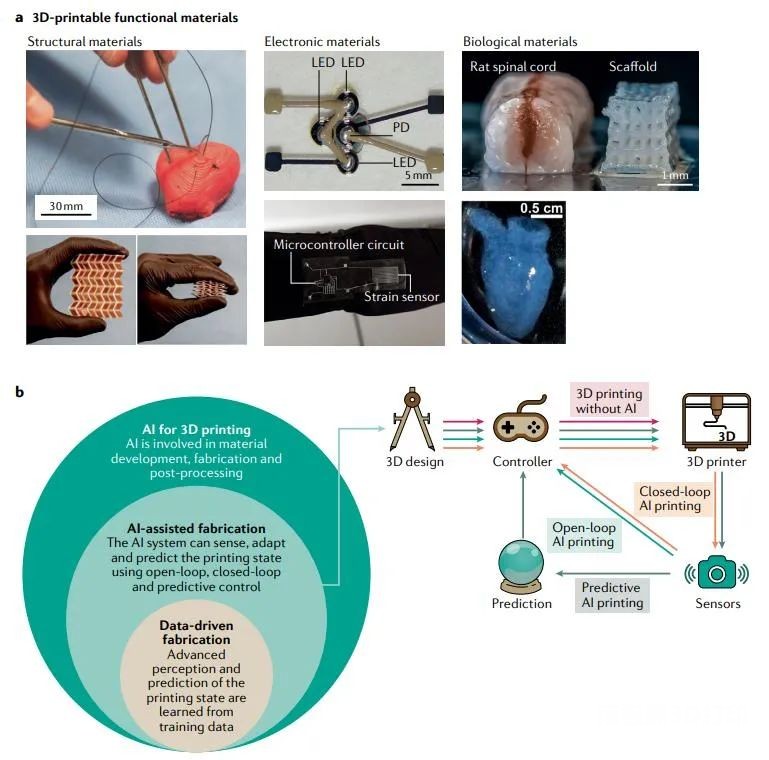
Except for the tradition without AI3D printingOutside the system, according to the three levels of AI participating in the printing process, printing can be divided into three types: open-loop AI, closed-loop AI and predictive AI.
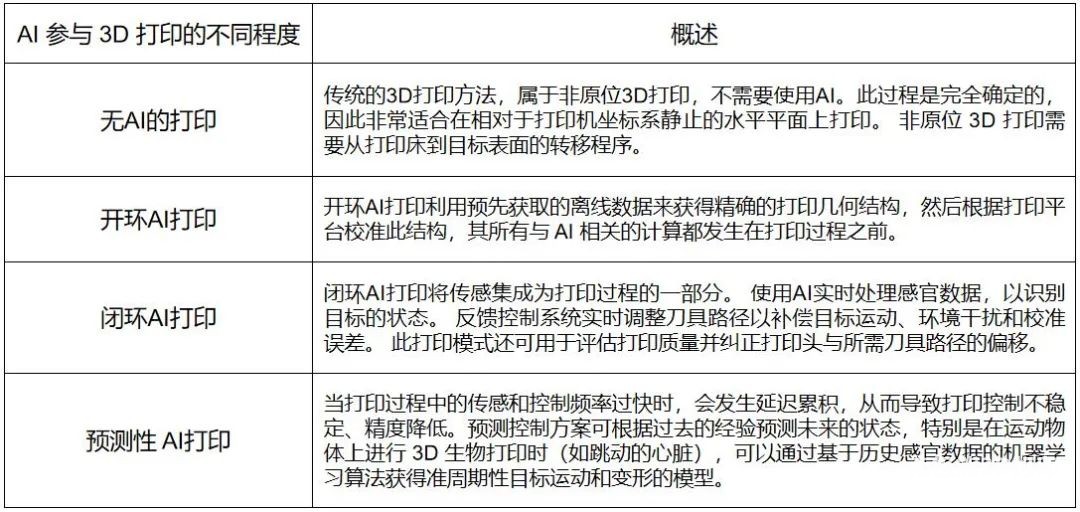
1. Used in situ3D printingFunctional ink
3D printingThe materials need to be matched with the corresponding3D printingThe methods are compatible. These methods are usually divided into light-curing-based or extrusion-based printing. Light-curing-based printing methods usually require the printing material to have the ability to be light-curable, while the extrusion-based printing method requires the printing material to have a certain The viscosity and shear-thinning characteristics of, so as to facilitate the realization of the extrusion process.
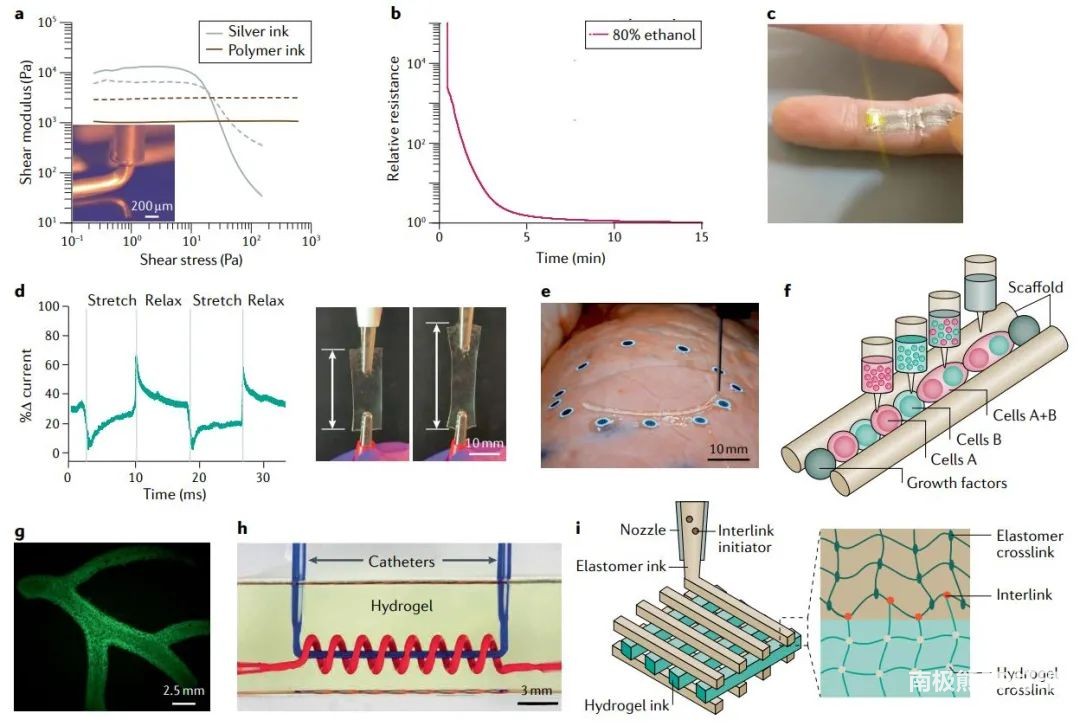
1.1 Electronic materials
For in-situ electronic equipment3D printingThe material needs to meet the electrical properties required for sensing, driving and other functions, and it needs to have mechanical and rheological properties that match the target biological surface. When using inorganic, hard materials, their size must be adjusted to suit extrusion-based printing, usually by crushing these materials into nano-sized particles.
1.2 Hydrogel
Hydrogels can be used in tissue engineering and bioelectronics applications. They are similar to natural extracellular matrix and can provide a suitable culture environment for cells. The strength and viscoelasticity of the hydrogel polymer network can be adjusted by changing the porosity and viscosity, and the printability can be optimized by adding photoinitiators and rheology modifiers.Hydrogel can be performed in situ on the surface of the tissue3D printingManufacture and thus be used in
Medical treatment
Sealants, adhesives
Implants
And wearable devices.
2. Open loop artificial intelligence3D printing
Open loop artificial intelligence3D printingInformation about the surface geometry of the printed structure needs to be obtained before manufacturing begins. AI uses this geometric information to determine the tool path design and material distribution. The sensing methods captured for different print structure geometries are as follows.
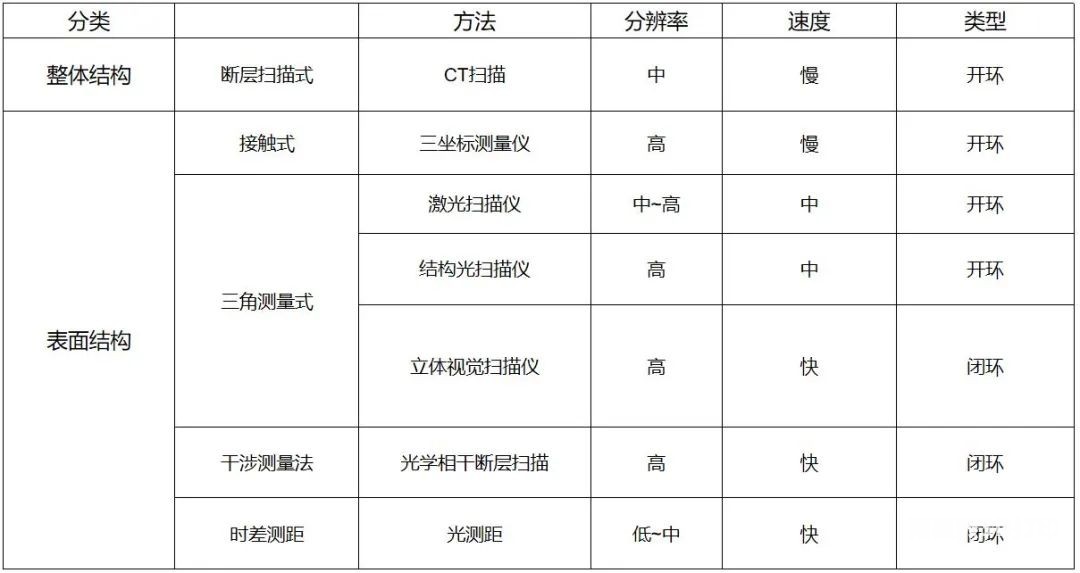
2.1 Perform on a non-planar surface3D printing
For open loop artificial intelligence3D printingIn other words, in order to achieve direct printing on a non-planar surface, AI must obtain the geometric information of the target before printing.For surfaces with more complex geometries, you need to use3D scanningTools and algorithms are assisted to perform dense point cloud data 3D reconstruction. In medical applications, the source of 3D information on the target surface is medical imaging data such as magnetic resonance imaging and CT scans.
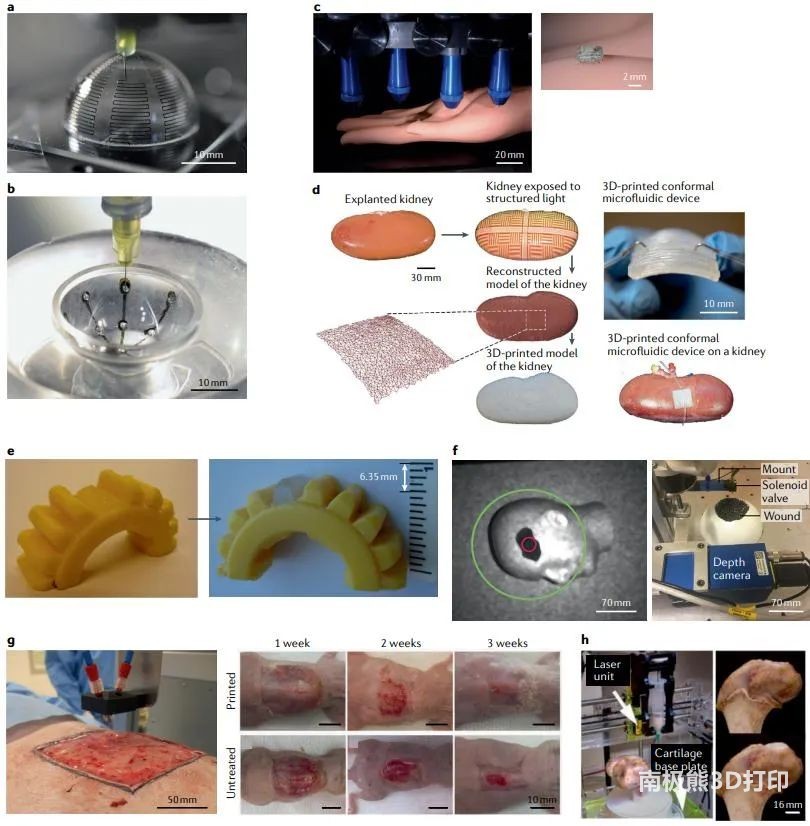
2.2 Shape programming based on target geometry
Through the use of shape programming, materials with special functions can achieve specified shape changes under specific stimuli (temperature, ion concentration, mechanical load).Shape programming based on target geometry is often used in the manufacture of wearable medical implants, which can directly3D printingOn the human body to perform
clinical
Diagnose or perform wound repair.
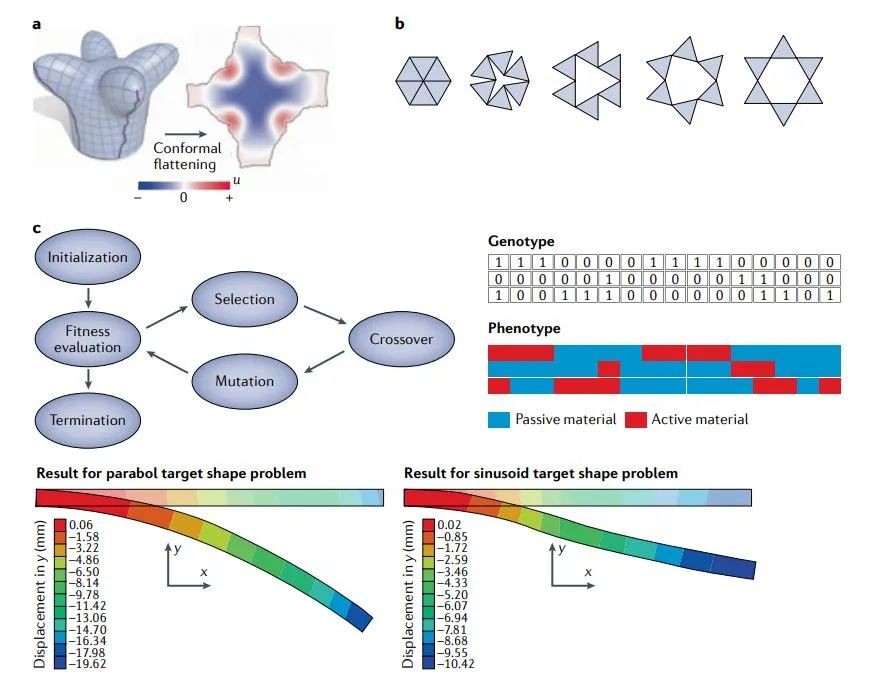
3. Closed-loop artificial intelligence3D printing
Closed-loop AI printing refers to real-time adaptation to changes in the printing environment3D printingThe method, which is based on detection, tracking and recognition algorithms, can update the movement status, the surface structure of the printing layer and the extrusion status of the print head in real time during the printing process.Closed loop artificial intelligence3D printingTwo major functions can be achieved: online correction to improve print quality, and online tracking to achieve in-situ printing on moving targets.
3.1 Improve print quality
In closed loop3D printingIn, various sensors pass and3D printingThe platform is integrated to be able to observe the status of materials and printing structures. Sensing data is fed back to computing tools such as computer vision and machine learning algorithms to identify printing defects and provide feedback to the material feeding and motion control system to correct errors in printing.
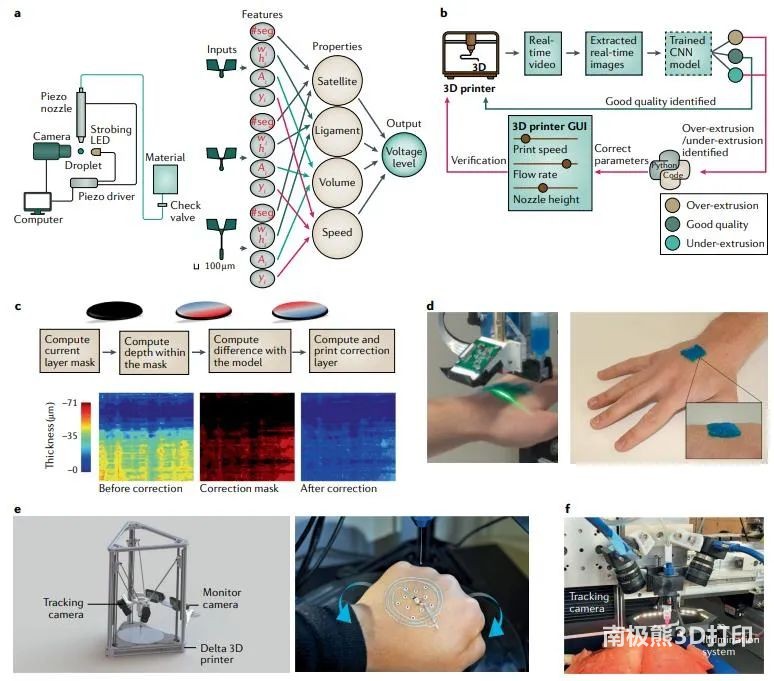
3.2 Perform on the moving target3D printing
The skin and soft organs in the living body will undergo rigid transformation and non-rigid deformation (breathing, heartbeat) over time. To achieve in-situ printing on these dynamically changing structures, it is necessary to update the sensing data in real time to adjust the printing path.
3.3 Robotic perception technology assists in-situ3D printing
The purpose of using robot perception technology is to identify the geometric and mechanical properties of organs and tissues, as well as the interference and uncertainty in dynamic systems. Low-level perception is similar to human visual perception. It uses imaging systems and image processing algorithms to detect visual features for 3D reconstruction.Advanced perception is similar to the perception of the brain and nervous system, in3D printingUnderstand the 3D scene reconstructed by low-level perception, and use it for subsequent tool path planning.
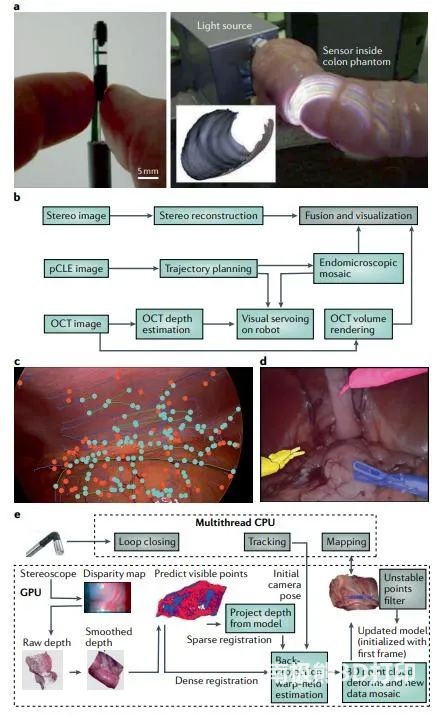
4. Predictive artificial intelligence assistance3D printing
On living organs3D printingThe ability of the sensor is mainly limited by the delay of sensing, control and calculation. The printing process needs to respond to the deformation of the tissue surface, otherwise it may cause the device to collide or penetrate the tissue, thereby affecting the printing quality and damaging the tissue. This requires predictive artificial intelligence to understand the current state while also predicting the future state based on past experience, predicting the future deformation of surrounding tissues and planning future commands to effectively reduce or eliminate printing errors.
5. Surgical robot achieves in-situ3D printing
In the medical field, surgical robots are in situ3D printingIt can directly transport biological materials with ideal electrical, chemical and biological functions into the human body, thereby assisting modern medical treatment in many ways. These surgical robots with advanced sensing and precise motion control capabilities can achieve “smarter” surgery to reduce deaths or injuries caused by medical errors.
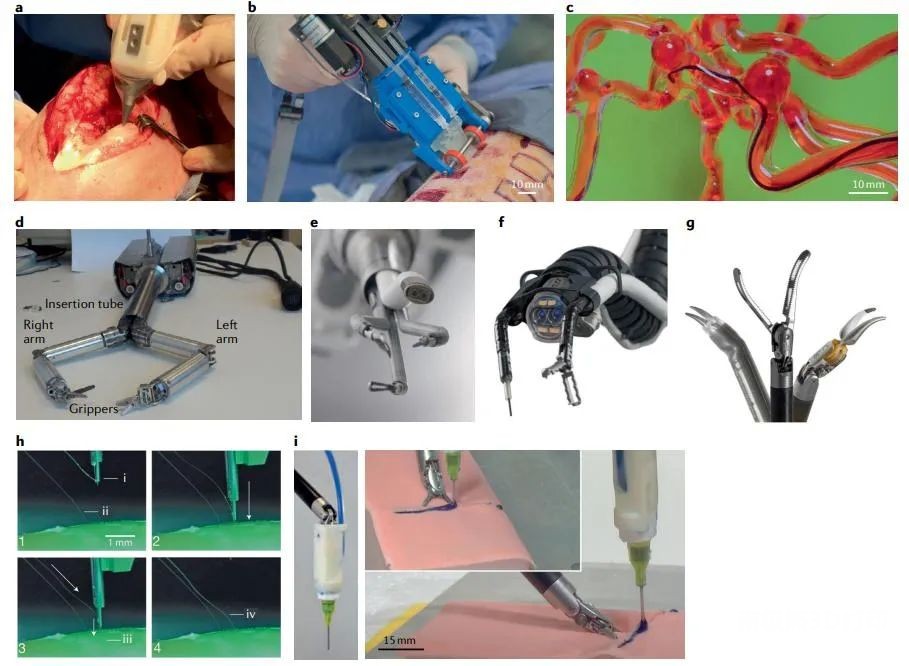
Using artificial intelligence-assisted manufacturing technology3D printingIt has great potential in the manufacture of wearable devices and implants, but the integration of AI technology in3D printingThe above is still in its infancy, and there is still a lack of3D printingThe intelligent interactive interface between the robot and the user.Looking to the future, technologies such as augmented reality and virtual reality and3D printingThe combination of artificial intelligence will enable artificial intelligence to achieve full-process printing guidance, and the use of artificial intelligence for assisted manufacturing will also become a step towards3D printingAn important way to popularize.
(Editor in charge: admin)


0 Comments for “Summary: Using artificial intelligence-assisted manufacturing technology to achieve 3D printing of multifunctional materials”